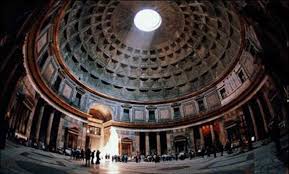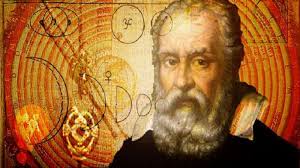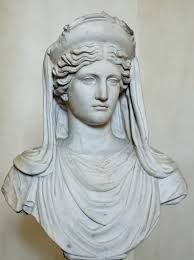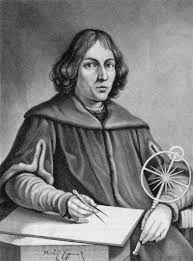Here Comes the Sun
Since the fall equinox, the bringer of earth’s light, that heliocentric fireball we spend our days and nights circling has been getting more and more stingy with its gifts, about 55 seconds a day more stingy. The winter solstice, on December 21st, is the moment when the north pole is tilted farthest from the sun, giving the earth the fewest hours of sunlight in the entire year. This year, sunrise is at 7:16 a.m. in NYC and the sun clocks out at 4:31 p.m., giving us a whopping 9 hours and 15 minutes of daylight. It’s no wonder the ancients threw parties and held feasts at this time of year. They were coaxing the light back into the sky and hoping a good party would be the way to do it.
There are other stories of the season. Greek mythology tells of Demeter, the goddess of the earth, agriculture and fertility, and the mother of her adored child, Persephone. When Hades kidnapped Persephone and brought her to the underworld to be his wife, Demeter lost her mind and took her desperation out on earth’s inhabitants, causing everything to wither and die. The people were starving so they prayed to Zeus who intervened, sending Hermes to retrieve Persephone and bring her back to the land of the living. But Hades tricked Persephone who had refused all food or drink until this time, and knowing Hermes was on his way, he told Persephone she was free to go and handed her a pomegranate. Well, by this time, the kid was starving so she had a nibble. When Hermes arrived and said, “Let’s go,” Hades said, “Hey, what’s that on your tongue?” Turns out Persephone had six pomegranate seeds in her mouth which meant that for the rest of her life she would have to spend half of each year in the Underworld with Hades. So goes the myth of how we came to have the seasons. When Persephone was topside, Demeter was joyful and there was a bountiful harvest, and when Persephone was away from her mother, the world became dark and cold and desolate.
For years, people prayed to the sun, thinking it was an actual God and the source of their abundance. Without the sun, earth was in a perpetual state of night, a dismal place like the endless winter of Demeter’s dismay. Yet winter wasn’t all Demeter’s doing. Apollo, the sun god of the Ancient Greeks, the bringer of light to the earth and the one who tipped Demeter off to Hades’ abduction was also involved. Without Apollo, crops didn’t ripen and the earth didn’t warm. Apollo still took to the skies every winter morning, but his solar beneficence waned on those dark days as he streaked across in his gilded, horse-drawn chariot, holding his brilliant warmth back in solidarity with his fellow Olympian who was grieving her lost child.
The hieroglyphs of Ancient Egypt also portray early man’s fascination with and dependence upon the sun. The Egyptians prayed to Ra, the Sun God, the bringer of light. Over time, the Pharaoh, who the Egyptians believed to be a physical embodiment of the god Horus, one who “sits on high”, and Ra became inextricably intertwined — possibly because they both bore the symbol of a falcon’s head, but more likely because they both were bringers of light and wisdom to the Egyptian people — so much so that eventually, Ra, Horus, and the sitting Pharaoh all presented as one and the Pharaoh of Egypt became a god to his people.
Sun worshipping and pagan rituals weren’t even cast aside when the Catholics came to town, but were subsumed by the Church to assist with the pagan conversion to Christianity, a brilliant plan, really, and one that made subjugation more palatable and the pagans more pliable. One only need look at the Pantheon in Rome to see such brilliance in action.  In continuous use since the 7th century, the Pantheon was built by the Romans as a sacred place of pagan worship and later co-opted by the Catholics as a church dedicated to St. Mary. By replacing the iconography of ancient gods with that of modern-day saints, the Pantheon stands as a testament to how pagan rituals informed and transformed modern religion.
In continuous use since the 7th century, the Pantheon was built by the Romans as a sacred place of pagan worship and later co-opted by the Catholics as a church dedicated to St. Mary. By replacing the iconography of ancient gods with that of modern-day saints, the Pantheon stands as a testament to how pagan rituals informed and transformed modern religion.
The winter solstice, celebrated by the pagans as the day the sun stands still —sol, meaning sun, and stice, meaning still — was intertwined with the birth of Christ, a day that the world stood still. No one knows on what day Christ was actually born, but the first celebration of his birth was December 25, 336. By melding the two, christianity successfully co-opted a pagan ritual.
 With the advent of science and the discovery of the heliocentric nature of our solar system by Nicolaus Copernicus, and his theory’s later championing by Galileo Galilei, man’s perceptions changed again. That the earth revolved around the sun and not the other way around was considered blasphemous by the Catholic Church, and Gallilei went on trial as a heretic. He recanted to save his life (who can blame him?), but few believed the confession, and modern science forged ahead.
With the advent of science and the discovery of the heliocentric nature of our solar system by Nicolaus Copernicus, and his theory’s later championing by Galileo Galilei, man’s perceptions changed again. That the earth revolved around the sun and not the other way around was considered blasphemous by the Catholic Church, and Gallilei went on trial as a heretic. He recanted to save his life (who can blame him?), but few believed the confession, and modern science forged ahead.
Our perceptions are still evolving. That amazing, vibrant body composed of hydrogen and helium, and a few other (about 9) elements, which form a hot dense mass capable of sending enough heat down to fire up our entire planet, our very own combustible source of energy and light, stands ready to be harnessed. According to NASA, the sun produces enough energy to supply the United States with 13 billion years of energy, and that’s in one second! It’s time we used it by developing environmentally beneficial, sustainable technology that’s good for mother earth and for us.
The good news is, the technology is here. Now if we can just get Congress to incentivize solar technology instead of giving all the tax breaks to oil and gas.
Happy Summer Solstice!
pjlazos 12.21.17

















Yay, sun! So looking forward to longer days again!
LikeLiked by 1 person
Finally it isn’t dark at 5 o’clock!
LikeLiked by 1 person
It’s most important to me that the sun come up at a reasonable hour. Getting up in the dark depresses me. I just want to stay in bed.
LikeLiked by 1 person
I know – and it was 6 degrees this morning in central PA which made it doubly hard.😘
LikeLiked by 1 person
Well, all I know, Pam, is that I’m over winter, so wake me up when it’s summer!
LikeLiked by 1 person
Haha! And we’re only five days in! It’s going to be a long nap, 😴 Michele!
My sister bought me a shirt for Christmas 🎄 that says, “I just want to drink wine, 🍷 save animals, and take naps.”😘
LikeLiked by 1 person
Nice BLOG!!!
LikeLiked by 2 people
Thanks very much!
LikeLiked by 1 person
Excellent post!… I have always thought that Persephone´s abduction and stroy in general was such a great pretext to explain the seasonal changes. And the promenagate playsed such an important role if you stop to think of it.
I like the sections concerning Apollo and how teh fact that he could have vanished at times explained the dark, cold days… I didn´t know much about Ra, so I thank you for the information concerning him that you provide here. Happy Winter Solstice for you 😀 Merry Christmas & happy New Year! 🙂
LikeLiked by 3 people
Thank you for the high praise, Amalia. Coming from the Queen of Greek mythology it is an honor indeed. 🙏
LikeLiked by 1 person
Hurry back Persephone! Please!
LikeLiked by 2 people
👍🎄🙏
LikeLike
My goodness, the Mr. and I were just talking about the winter solstices yesterday and now here is your wonderfully detailed post. A nice change from all the Christmassy ones. The Pantheon is a sight to see. AND there’s snowy mountains. xxxxxxxxxxxxxxxxxxxxxxxxxxxxxx to you and yours sister, Enjoy the season.
LikeLiked by 4 people
You, too, my sister, and thanks for always being one of my personal beacons if light! 💡 😘
LikeLiked by 1 person